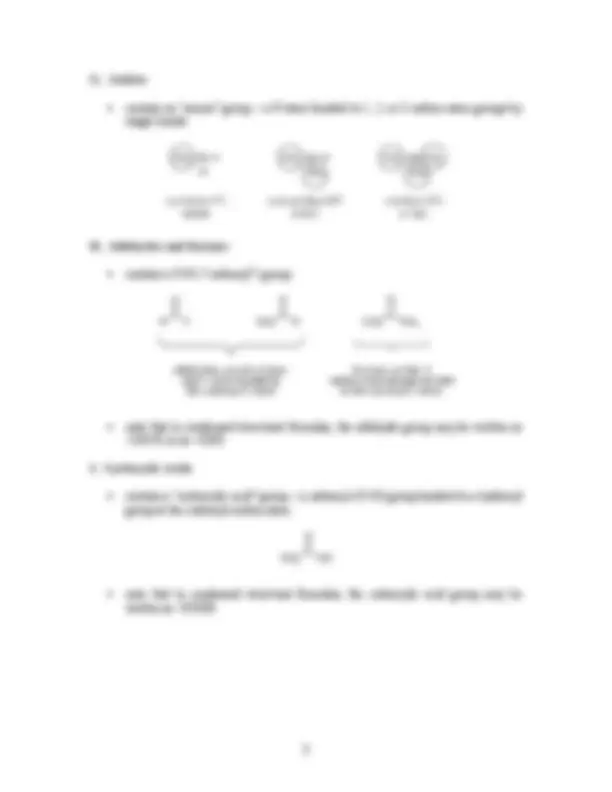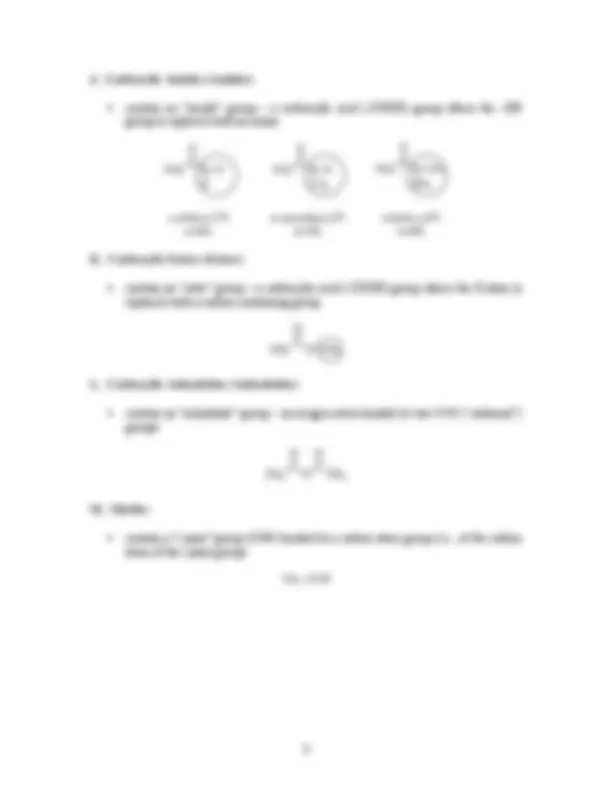




Study with the several resources on Docsity

Earn points by helping other students or get them with a premium plan


Prepare for your exams
Study with the several resources on Docsity

Earn points to download
Earn points by helping other students or get them with a premium plan
Community
Ask the community for help and clear up your study doubts
Discover the best universities in your country according to Docsity users
Free resources
Download our free guides on studying techniques, anxiety management strategies, and thesis advice from Docsity tutors
Structural Formulas and chemical reactions, Naming organic compounds.
Typology: Lecture notes
1 / 4

This page cannot be seen from the preview
Don't miss anything!



functional group : an atom, or group of atoms (with specific connectivity), exhibiting identical chemical reactivity regardless of the molecule containing it; the reactivity of individual functional groups dictates the reactivity of the molecule of which they are a part
A. Alkanes
B. Alkenes
C. Alkynes
D. Arenes
E. Alcohols
F. Ethers
J. Carboxylic Amides (Amides)
K. Carboxylic Esters (Esters)
L. Carboxylic Anhydrides (Anhydrides)
M. Nitriles